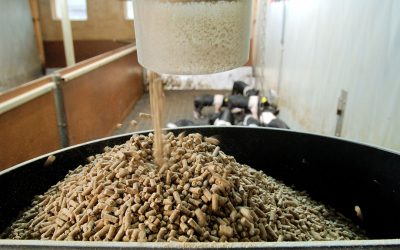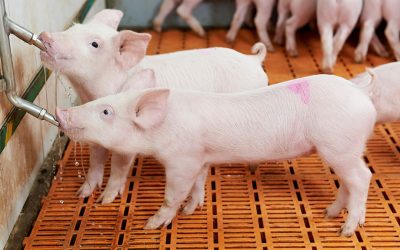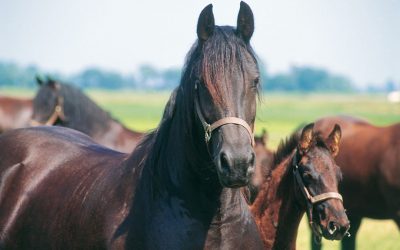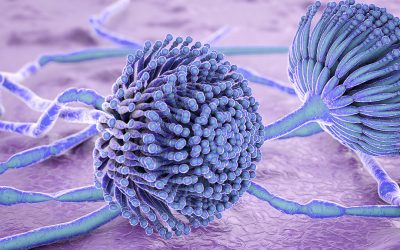Pavo sells horse nutrition with emotion
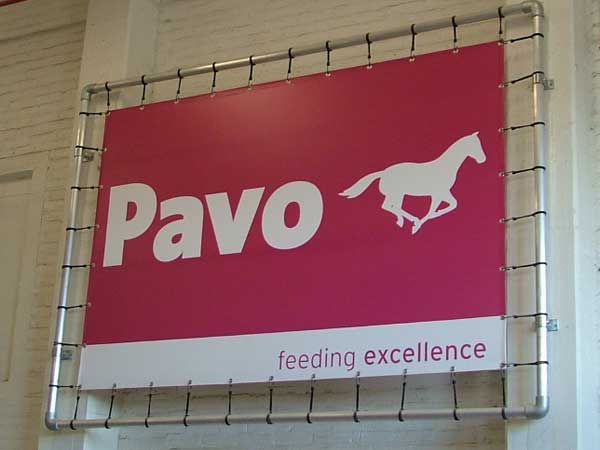
In producing feed for livestock the performance and well being of the animal is a key factor, but with feeds for companion and sports animals the owner also has to be pleased. With horses the majority of caretakers and riders are female which adds another dimension to the presentation of the feed: emotion. And that is what Pavo tries to combine.
In the developed world horses are no longer used as a working horse on a farm or in transport. Nowadays the relationship between a horse and man is about emotion, sports and leisure. Also the nutritional needs of the horse can no longer be compared with the needs of a working horse of several decades ago. The history of Pavo goes back to the sixties, and the company evolved with the change-over from the working horse to the tractor. A Dutch entrepreneur, Mr De Lange, saw a market in this change. He originally started a premix business for veal calves, called Stimulan, in 1963. Five years later in 1968 he started making horse feeds under the brand name Pavo (which is an abbreviation of PAardenVOeding in Dutch, horse nutrition in English). In the following years it became clear that horse feeds showed a good market future and since the eighties of last century these became the core products of Stimulan. In 1988 Stimulan was sold to feed miller UT Delfia, which in turn in 1998 merged with Hendrix Feeds and now operates under the Nutreco umbrella. So Stimulan is now a business unit within the Hendrix group of the Agri branch of Nutreco. Stimulan sells three brands of feeds: Pavo and Equiral for horses and Hedric for hobby animals.
Production of horse feeds takes places in a dedicated plant in Heijen, the Netherlands, alongside the river Meuse. Here is where I meet Rob Krabbenborg, product manager for Pavo, who is going to show me around. Krabbenborg started with Nutreco in pig feeding, but being a horse lover he switched to Pavo when the opportunity was there. “We receive a lot of visitors here,” he says with enthusiasm, “from all over the world. Last week we had a group of Chinese people and today a lady from Canada was interested in our products.”
Despite this intercontinental interest Pavo mainly operates in Europe. In the countries were we are active in sales and marketing we try to get a top three position, otherwise our investment in marketing can not be earned back. As a result Pavo is market leader in the Netherlands with 28% market share in horse feeds, furthermore it has a 17% market share in Belgium and 21% in Spain (through Nutreco’s subsidiary Nanta), 9% in Austria, 10% in Denmark and 7% in Germany to name a few countries.
Only mixing
As a company, Pavo takes care of the product development, the R&D, the marketing and sales of their horsefeeds. The production and logistics of the horse feeds is outsourced to Nutreco companies. Today we are at the Nutreco muesli plant of Hendrix in Heijen. This plant used to be a poultry feed plant. “When this plant became too small, Hendrix built a second much larger plant for poultry feeds behind this one (in the eighties) and this one was left redundant for over 20 years,” Krabbenborg said. “A few years ago we saw that the market for pelleted horse feeds stabilised and we saw a sharp increase in sales of mueslis, so we needed a facility to produce the latter. The old poultry plant was available and the decision was made to refurbish the internal sections and make it suitable for muesli production.”
All in all over €1 million was invested in appliances and equipment and the plant was in operation again at the end of 2009. There are eight large silos for the main ingredients and 48 small narrow silos for the more specific ingredients. “These silos were already present in the old factory, which was to our advantage, because we wanted to have the plant operated by just one person and all ingredients added from silos,” Krabbenborg explains. These narrow small silos were installed because Hendrix was grinding its raw materials before putting them in storage. Now they can be used for all kinds of raw materials without too many flow problems. Dried carrot cuts for example have a bit of a rubbery consistency and are a difficult product in a silo, but the narrower the silo, the better the product will flow.
The plant is solely in use for the production of horse feeds. “We are careful with contamination, because if you make feeds for different species there is always the chance of cross contamination of ingredients,” Krabbenborg says. As an example he mentions cocoa products that are used in cattle feeds, which should not end up in horse feed. Cocoa contains theobromine (a blood vessel widener) and when this is found in a competition horse it is considered doping and the horse and rider will be taken out of competition.
Mixer is central
At the core of the plant is a paddle mixer where all products come together. In just 20 seconds a batch (500-1,000 kg) of muesli is prepared. Weekly production is around 350 tonnes, all in bags. For the larger customers the mix is also supplied in big boxes, which contain 500 kg. Only since recently Pavo switched to 15 kg bags, which is quite unique since most suppliers still use 20 kg or even 25 kg bags. The decision to choose for 15 kg bags was taken because a 15 kg bag of muesli with a relative low density (app. 600 g/l) has a similar size to the 20 kg bags of pellets. From Heijen the whole of Europe is supplied by truck, except Spain. Here, a copy of the Heijen plant was built close to Madrid, which began production just recently.
Female target group
Horse feeds are sold to a very specific target group, namely women. “In the equine world 75% of our customers are female and of that group 60% are between 13 and 30 years of age,” says Krabbenborg. “This requires a very specific marketing approach, which includes the dimension of emotion to our communication with customers. Where men are not directly affected by the outer appearance of the feeds but more by the economical values, for women the feed, and the way it is packed, has to look good, feel good and smell nice.
”Pavo achieves this by looking carefully at the ingredients it adds to the mix. First and foremost of importance is the actual form of the feed, which is a mix of ingredients presented as a muesli. Although 30-50% of the mix is in the form of pellets, this is not directly visible due to the limited pellet size of 4-5 mm. Main ingredients here are alfalfa pellets – which are very tasteful to horses – and other high fibre pellets, such as soy hulls and wheat bran and molasses is added to make them pelletable. The vitamin and mineral mix is also added as a pellet.
Furthermore the main ingredients are cereals. Krabbenborg explains that horses and cereals do not go well together, except for oats. “Horses cannot digest whole grains very well, that is why we mainly use puffed grains, which have an almost 80% digestibility and besides that also a good palatability.” The main cereals that are used are puffed barley, maize and wheat and clipped oats. A rare grain with low energy, thus suitable for leisure horses that do not exercise a lot, is spelt Triticum spelta, a hexaploid species of wheat. For attractiveness some specialities are added to the mix in a 1-2% inclusion rate, such as dried carrots (attractive colour), pea flakes (light green colour) and alfalfa sticks (dried without leaves, natural appeal). In the herbal mixes, herbs such as garlic and fenugreek are added in very small quantities. As liquids some soy oil and molasses is often added. As whole seeds toasted soybeans are added or linseed for a nice shine of the horse’s hair coat. All these products contribute to the appearance of the muesli, to the appeal for the (female) customers and the health of the horses – it looks nice, smells nice, I like it, so my horse must like it too.
How much does a horse need? Krabbenborg explains that a sports horse of about 600-650 kg requires 1.5% of its bodyweight as dry matter. This for 80% can be supplied from roughage like hay or silage and 20% through compound feed. This means that the daily intake of the muesli should be about 600-650 kg × 1.5% × 20% = 1.8 to 2 kg feed.
More information on Pavo horse feeds can be obtained from Rob.Krabbenborg@nutreco.com




